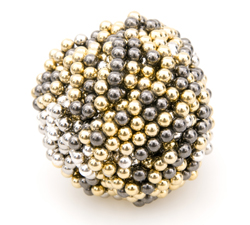Revolutionary new magnetic materials
Metamaterials are a relatively new class of man-made materials with artificial periodic structures. Their revolutionary electromagnetic (EM) functionalities are due to light (photonic metamaterials) and electron (electronic metamaterials) propagation. Scientists set out to develop magnetic metamaterials with novel functionalities supported by EU-funding of the project 'Mastering magnons in magnetic metamaterials' (MAGNONICS). The MAGNONICS consortium adopted existing or developed new nanomanufacturing techniques specifically suited to magnetic metamaterials production. These included various lithography and etching techniques, deposition processes, and conventional sputtering and evaporation techniques. In addition, scientists developed new or adapted existing dynamic characterisation techniques enabling groundbreaking experiments that promise to guide future research and development (R&D) in the field. Experimental characterisation has been complemented by the development of theoretical tools to describe and predict the behaviours seen during dynamical testing. Finally, using the manufacturing techniques and the experimental and theoretical tools, project partners created magnetic metamaterials. These were incorporated into working miniature devices instead of conventional continuous magnetic materials in microwave telecommunications or magnetic (magnonic) logic devices. MAGNONICS contributed groundbreaking tools, techniques and new materials to the rapidly growing field of magnetic metamaterials. Outcomes promise to pave the way to the exploitation of these in future devices for exciting new functionalities.

